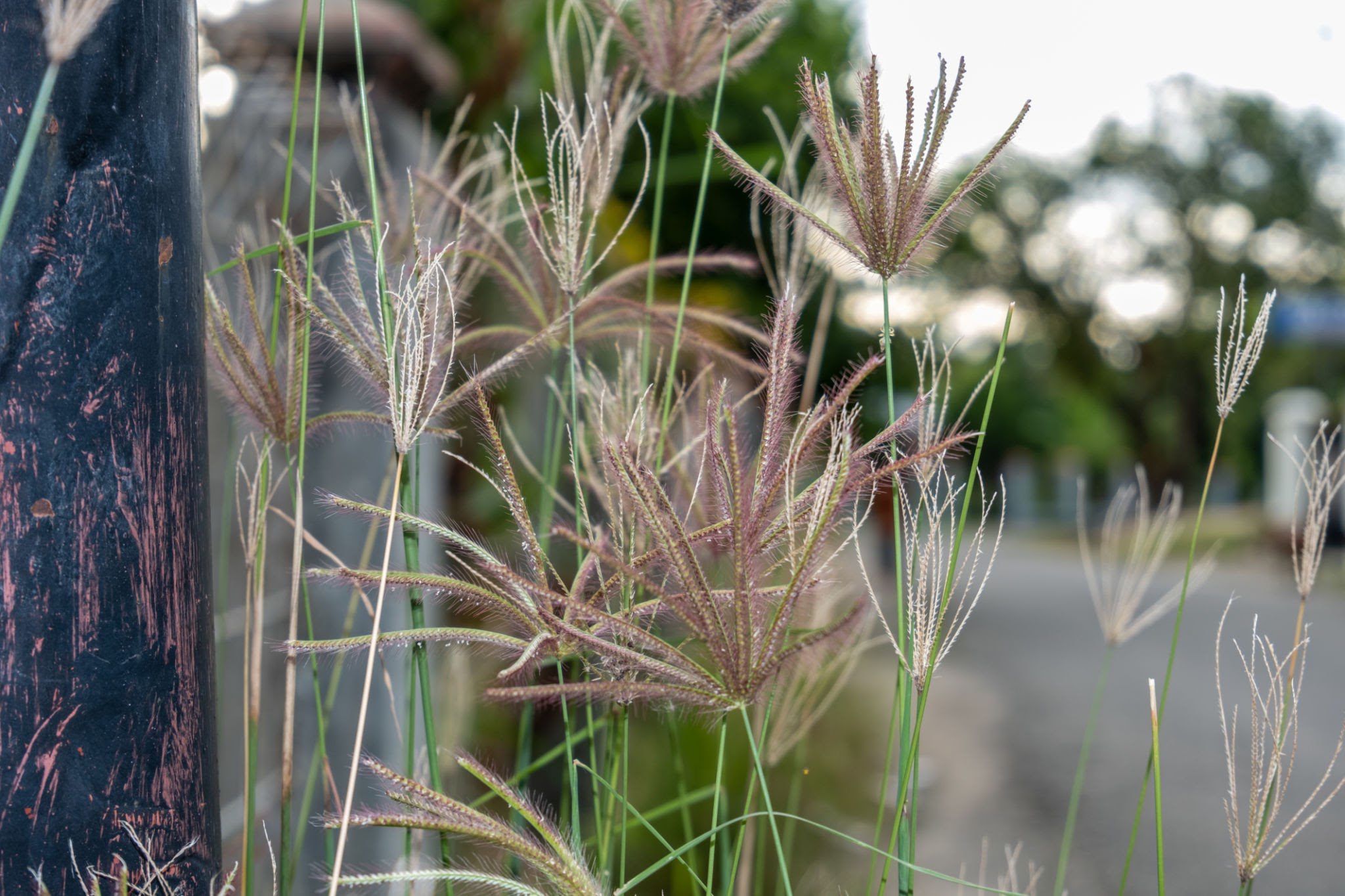Windmill grass, scientifically known as Chloris texensis, is a warm-season perennial grass that is native to North America, particularly the southwestern United States. It is a member of the Poaceae family, which includes many important grass species.
Windmill grass is often referred to by various common names, including Texas windmill grass, purpletop windmill grass, and tumble windmill grass.
Here are some key characteristics and information about Windmill Grass:
Windmill grass is commonly found in a variety of natural habitats, including prairies, open woodlands, and disturbed areas. It is well-adapted to survive in a range of soil types, including sandy and loamy soils.
Windmill grass typically reaches a height of about 1 to 3 feet (30 to 90 cm). It has fine, slender stems and long, narrow leaves. The grass gets its common name, “windmill grass,” from the way its seedheads spin in the wind.
The seedheads of windmill grass are distinctive and are one of its most recognizable features. They are open, spreading structures with several branches that radiate out from a central point. These seedheads can take on a purplish or reddish tint, which contributes to the common name “purpletop windmill grass.”
Windmill grass is a warm-season grass, meaning it grows actively during the warmer months of the year, from spring to early autumn. It becomes dormant during the winter.
Windmill grass can be an important food source for various wildlife, including birds and small mammals. Its seeds are a valuable food resource for these animals.
Windmill grass can be a useful species for soil stabilization in disturbed areas. It helps prevent soil erosion and can improve soil quality over time.
Windmill grass can be grown as a forage grass for livestock in some regions. It is drought-tolerant and can withstand grazing pressure, making it suitable for pastures.
In some areas, windmill grass may be considered invasive or undesirable due to its ability to compete with other, more desirable grass species. In such cases, land managers may implement control measures to limit its spread.
Overall, windmill grass is a native grass species with unique seedheads and an important ecological role in various ecosystems. It’s valued for its adaptability and use as forage but can also be a challenge in some contexts due to its invasive tendencies.
How To Grow Windmill Grass (Chloris texensis)
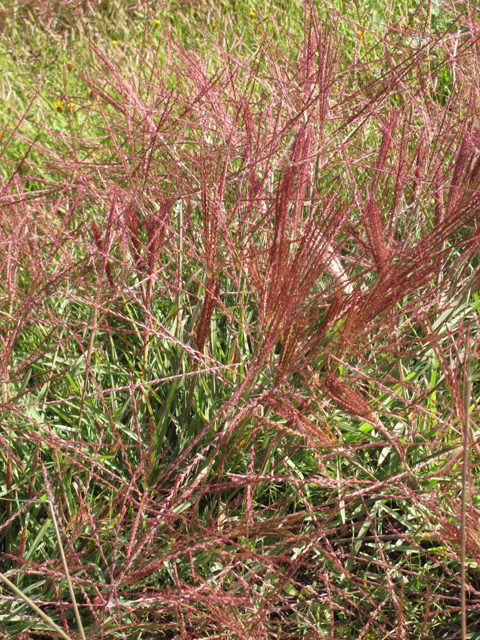
Windmill grass, scientifically known as Chloris texensis, is a warm-season grass that can serve both agricultural and ecological purposes. To successfully grow windmill grass, one must understand its specific requirements and best practices. In this guide, we will delve into the essential steps and considerations for cultivating windmill grass effectively.
1. Site Selection: Before planting windmill grass, carefully choose an appropriate site that meets its environmental needs. Windmill grass thrives in full sun, so select a location with ample sunlight exposure. Well-draining soils, such as sandy or loamy soils, are ideal. Ensure good air circulation and avoid areas with excessive shade.
2. Seed Selection: Select high-quality windmill grass seeds from a reputable source. Consider factors such as seed purity and germination rate. Windmill grass seeds are usually available from agricultural suppliers or native seed companies.
3. Planting Time: Windmill grass is a warm-season grass, so the best time to plant it is in late spring or early summer, when the soil temperature has reached at least 65°F (18°C). This ensures that the seeds will germinate and establish well.
4. Soil Preparation: Prepare the soil by removing any weeds, rocks, or debris. It’s advisable to perform a soil test to determine nutrient levels and pH. Windmill grass typically prefers a slightly acidic to neutral pH range of 6.0 to 7.0. Make any necessary adjustments based on your soil test results.
5. Seeding and Planting: The seeding and planting of Chloris Texensis should be done by an expert. The steps involved in planting the grass include:
5a. Seed Rate: The recommended seeding rate for windmill grass is approximately 2-4 pounds per acre. You can adjust this rate depending on your specific goals and the seed’s germination rate.
5b. Seed Distribution: To ensure even distribution, mix the windmill grass seeds with a carrier material such as sand or sawdust. Broadcast the seed mixture evenly over the prepared soil.
5c. Seed Depth: Lightly cover the seeds with soil, aiming for a planting depth of about 1/8 to 1/4 inch (3-6 mm). Avoid burying the seeds too deeply, as they require light for germination.
6. Watering and Establishment: The following steps should be taken to ensure proper watering of Windmill Grass:
6a. Initial Irrigation: After seeding, provide adequate moisture for the seeds to germinate. Keep the soil consistently moist but not waterlogged until the grass establishes, which usually takes several weeks.
6b. Reduced Watering: Once the grass is established, gradually reduce the frequency of watering. Windmill grass is drought-tolerant and does not require excessive moisture.
7. Maintenance: This species of plant require high level maintenance in order to yield provide good yield. The farmer should follow the following steps in order to maintain Windmill Grass at a good level:
7a. Weed Control: Keep the area free of weeds, especially in the early stages of growth when windmill grass is most vulnerable to competition.
7b. Fertilization: If your soil test indicates nutrient deficiencies, consider applying a balanced fertilizer following recommended rates for warm-season grasses.
7c. Grazing or Mowing: If growing windmill grass for forage, plan a grazing or mowing schedule to maintain the grass at a desirable height. Allow it to regrow to ensure long-term sustainability.
8. Monitoring and Adaptation: Regularly monitor the growth and condition of your windmill grass stand. Make adjustments to your management practices as needed, based on factors such as weather conditions, pest pressures, and desired land use objectives.
9. Harvest and Utilization: If you’re growing windmill grass for forage, time your harvest for optimal nutritive value and consider rotational grazing to maximize its yield.
By following these detailed steps and taking into account the specific requirements of windmill grass, you can successfully cultivate this warm-season grass for various agricultural and ecological purposes. Proper site selection, seed quality, and ongoing maintenance are key to a thriving windmill grass stand.
Read Also: 25 Medicinal Health Benefits Of Mirabilis multiflora (Colorado Four O’Clock)
How To Care for Windmill Grass (Chloris texensis)
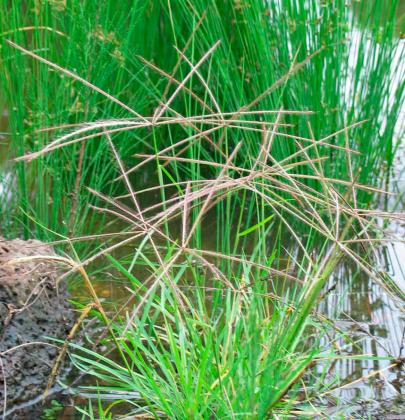
Proper care and management of this grass species are essential to harness its benefits and prevent any negative impacts on your land.
Here’s a detailed guide on how to care for windmill grass:
1. Site Selection: Choose appropriate sites for windmill grass cultivation, focusing on areas with well-draining soil. Windmill grass is adaptable to various soil types, but it thrives in soils that offer good drainage.
2. Planting: Windmill grass can be established by either seeding or transplanting. Seeding is the most common method, and it’s crucial to sow the seeds at the right time, typically in late spring or early summer when soil temperatures are warm.
3. Seedbed Preparation: Prepare a clean, weed-free seedbed by removing any existing vegetation or weeds. Loosen the soil to a depth of 1 to 2 inches to provide a good seed-to-soil contact.
4. Seeding Rate: The recommended seeding rate for windmill grass is around 2 to 4 pounds of pure live seed per acre.
5. Fertilization: Windmill grass is known for its adaptability to low-fertility soils. However, if your soil is deficient in essential nutrients, you may consider applying a balanced fertilizer according to soil test recommendations.
6. Watering: After seeding, ensure consistent soil moisture during the germination phase. Irrigate as needed to keep the soil consistently moist, but not waterlogged.
7. Weed Control: Windmill grass competes well with most weeds once established. However, it’s essential to control weeds during the establishment phase to prevent them from outcompeting the grass seedlings.
8. Grazing Management: If you intend to use windmill grass as forage, establish a proper grazing management plan. Allow the grass to establish before introducing livestock, as overgrazing during the early stages can hinder its development.
9. Harvest Timing: If windmill grass is intended for hay production, cut it when the grass reaches the appropriate maturity stage, typically during the late vegetative to early seedhead emergence stage.
10. Pests and Diseases: – Monitor for any signs of pests or diseases and take appropriate measures to control them if necessary. Windmill grass is generally resilient but not immune to issues.
11. Winter Dormancy: – Windmill grass goes dormant in the winter, during which it appears brown and inactive. This is a natural part of its growth cycle, so don’t be alarmed by its winter appearance.
12. Soil Conservation: – Windmill grass plays a role in soil conservation, preventing erosion and improving soil quality. Incorporate it into your land management strategy to protect your soil.
13. Maintenance and Renovation: – Periodically assess the stand and consider overseeding or renovating as needed to maintain its vigor and productivity.
14. Invasive Control: – In areas where windmill grass is invasive and undesirable, consider implementing control measures to limit its spread and promote the growth of native or desired species.
Uses and Benefits of Windmill Grass (Chloris texensis)
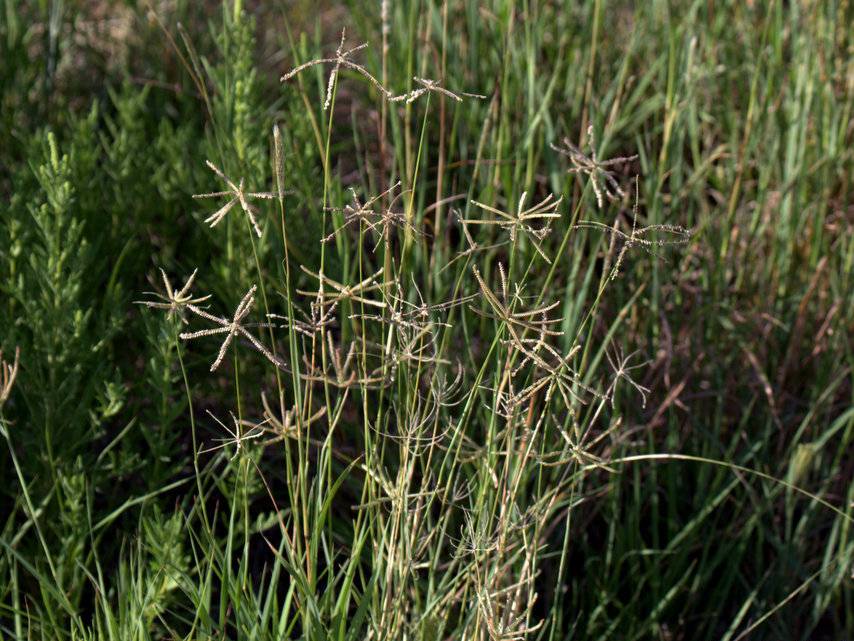
1. Forage and Grazing: Windmill grass serves as an excellent forage option for livestock, particularly in arid and semi-arid regions. Its drought tolerance allows it to persist in harsh conditions, making it an important component of pastures.
Cattle, sheep, and goats readily consume windmill grass, and it provides a source of nutrition during the warm months when other forage may be scarce. This can reduce the need for supplemental feeding and improve livestock performance.
2. Soil Stabilization: Windmill grass plays a crucial role in soil conservation and stabilization. Its fibrous root system helps prevent soil erosion, making it an effective choice for restoring and rehabilitating degraded lands, such as construction sites or overgrazed pastures.
The grass’s deep, extensive root system enhances soil structure and water infiltration, reducing the risk of soil erosion during heavy rains or wind events.
3. Wildlife Habitat: Windmill grass contributes to wildlife habitat and biodiversity. The seeds of windmill grass are a valuable food source for various wildlife species, including birds and small mammals. By incorporating windmill grass into the landscape, you can support local ecosystems and promote biodiversity.
4. Erosion Control: Due to its ability to form a dense ground cover, windmill grass is effective in controlling soil erosion on slopes, along roadsides, and in areas prone to erosion. It stabilizes the soil and minimizes the loss of topsoil and nutrients.
5. Low Maintenance: Windmill grass is a low-maintenance species. It requires minimal inputs in terms of water, fertilization, and pest control, making it a cost-effective choice for land managers. This can lead to reduced operational expenses in agricultural and conservation efforts.
6. Native Species: The use of native grasses like windmill grass in agriculture and land management promotes the preservation of natural plant communities. Native species are adapted to local conditions and have co-evolved with the local environment, making them resilient and sustainable choices.
7. Soil Improvement: Windmill grass can improve soil quality over time. Its root system enhances soil aeration and encourages beneficial microbial activity, leading to improved soil health and fertility. This is especially important for long-term sustainability in agriculture.
In summary, Windmill Grass (Chloris texensis) offers numerous benefits and applications in agriculture and land management. Whether used as a valuable forage resource, a soil stabilizer, a wildlife habitat enhancer, or an erosion control measure, this native grass species is a versatile and eco-friendly option.
By incorporating windmill grass into your agricultural practices or land restoration projects, you can enjoy its advantages while contributing to the overall health and sustainability of your ecosystem.
Read Also: The Morphology of Grasses: Morphological Characteristics of Grasses
Frequently Asked Questions on Windmill Grass (Chloris texensis)
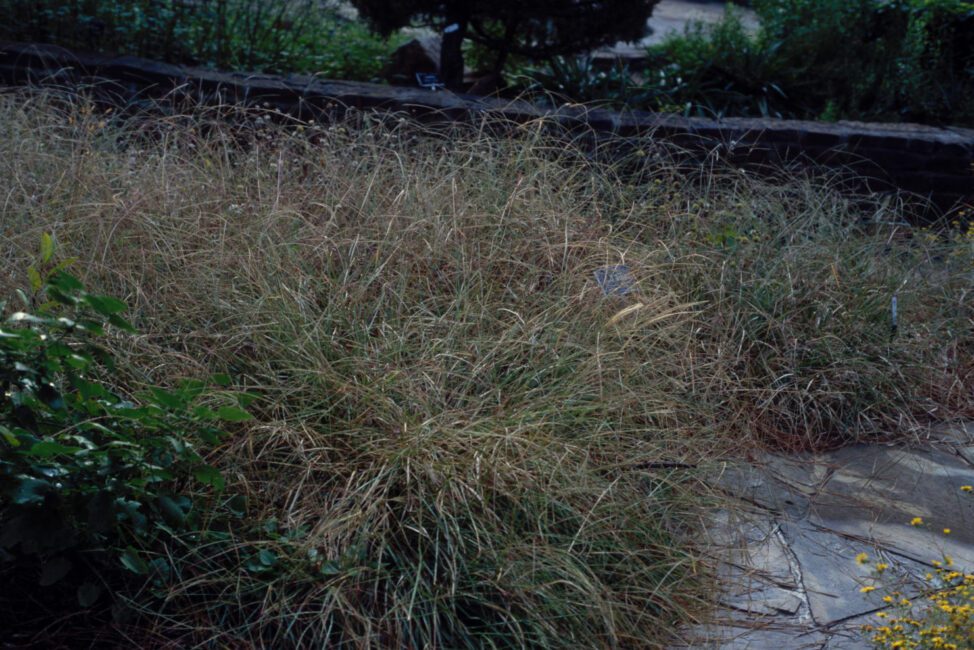
1. What is Windmill Grass, and where is it commonly found?
Windmill Grass, scientifically known as Chloris texensis, is a warm-season perennial grass native to North America, particularly the southwestern United States. It thrives in various natural habitats, including prairies, open woodlands, and disturbed areas.
2. What are the key characteristics of Windmill Grass?
Windmill grass typically grows to a height of 1 to 3 feet (30 to 90 cm) with slender stems and long, narrow leaves. Its most recognizable feature is the open, spreading seedheads with branches radiating out from a central point, often tinged with a purplish or reddish hue.
3. What is the growth season of Windmill Grass?
Windmill grass is a warm-season grass, meaning it actively grows during the warmer months, from spring to early autumn. It enters a period of dormancy during the winter.
4. How can Windmill Grass benefit agriculture and ecosystems?
Windmill grass plays a vital role in soil stabilization, making it valuable for erosion control in disturbed areas. It can also improve soil quality over time. Additionally, it serves as a food source for wildlife, including birds and small mammals, due to its seeds.
5. Can Windmill Grass be used for livestock forage?
Yes, Windmill Grass can be used as forage for livestock in regions where it is cultivated. It is drought-tolerant and can withstand grazing pressure, making it suitable for pastures.
6. Are there any challenges associated with Windmill Grass in agriculture?
In some areas, Windmill Grass may be considered invasive or undesirable due to its competitive nature against other, more desirable grass species. Land managers may need to implement control measures to limit its spread in such cases.
7. How can Windmill Grass be managed in agricultural settings?
Effective management of Windmill Grass involves a combination of practices such as controlled burning, herbicide application, and proper grazing strategies to prevent its dominance in pasture or rangeland environments.
8. Are there any cultivars or related species of Windmill Grass suitable for agriculture?
Several related species of Chloris, such as Chloris gayana (Rhodes Grass), are commonly used for forage and pasture improvement. These species offer various advantages for livestock and ecosystem management.
9. What are the environmental benefits of Windmill Grass in agriculture?
Windmill Grass can reduce soil erosion, enhance soil health, and provide valuable habitat and food sources for wildlife, contributing to overall ecosystem stability and sustainability.
10. How can farmers and land managers best utilize Windmill Grass in sustainable agriculture?
To maximize the benefits of Windmill Grass in agriculture, consider its adaptability to local conditions, its potential for soil improvement, and its role in supporting biodiversity. Manage it in a way that aligns with your specific agricultural and ecological goals.
11. Can Windmill Grass be used in conservation and land restoration projects?
Yes, Windmill Grass can be a valuable component in land restoration efforts, especially in areas where native grasses need to be reestablished. Its ability to stabilize soil and improve its quality can aid in ecosystem restoration.
12. Is Windmill Grass adaptable to various soil types and climate conditions?
Windmill Grass is known for its adaptability to a range of soil types, including sandy and loamy soils. It is also well-suited to arid and semi-arid climates, making it an excellent choice for regions with challenging environmental conditions.
13. What are some best practices for managing Windmill Grass in pastures?
Effective pasture management includes rotational grazing to prevent overgrazing, monitoring for potential invasiveness, and supplementing livestock diets as needed. Ensuring a diverse plant community can help maintain healthy pastures.
14. Can Windmill Grass be used for hay production?
Windmill Grass can be harvested for hay production, but it is important to manage it carefully to prevent it from becoming dominant and reducing overall pasture productivity. Timing of harvest and grazing rotation are key factors in hay production success.
15. Are there any potential risks associated with Windmill Grass in agriculture?
In some cases, Windmill Grass can become invasive and outcompete desirable forage species. It’s important to monitor its presence and growth in pastures and implement management strategies as needed.
16. What are the nutritional qualities of Windmill Grass for livestock forage?
Windmill Grass generally has good nutritional value for livestock. Its protein content and digestibility can vary depending on factors like maturity at harvest and soil conditions.
17. Can Windmill Grass be used in conservation tillage or agroforestry systems?
Windmill Grass is not typically used in conservation tillage or agroforestry systems. Its primary role is in grazing and pasture management, as well as soil stabilization and erosion control.
18. Is Windmill Grass a suitable cover crop for crop rotation systems?
Windmill Grass is not commonly used as a cover crop in crop rotation systems. Other cover crops are preferred for their specific benefits in improving soil health and suppressing weeds in agricultural fields.
19. How should farmers and landowners balance the benefits and challenges of Windmill Grass in their agricultural practices?
The key is to make informed decisions based on the specific needs of your agricultural and ecological goals. Balancing Windmill Grass with other forage species and implementing effective management practices is essential to harness its benefits while mitigating potential challenges.
20. Are there any ongoing research or developments related to Windmill Grass in agriculture?
Ongoing research aims to better understand the ecological and agronomic aspects of Windmill Grass, including its potential uses in conservation and sustainable agriculture. Staying updated with the latest findings can help farmers and land managers make informed choices.
In conclusion, Windmill Grass (Chloris texensis) has both advantages and considerations in agriculture and ecosystem management. Its adaptability, soil-stabilizing properties, and value for livestock make it a versatile grass, but its potential invasiveness and management requirements should be carefully addressed to maximize its benefits while minimizing any negative impacts on the agricultural landscape.
Read Also: Healthy reasons why you should be taking enough Water

